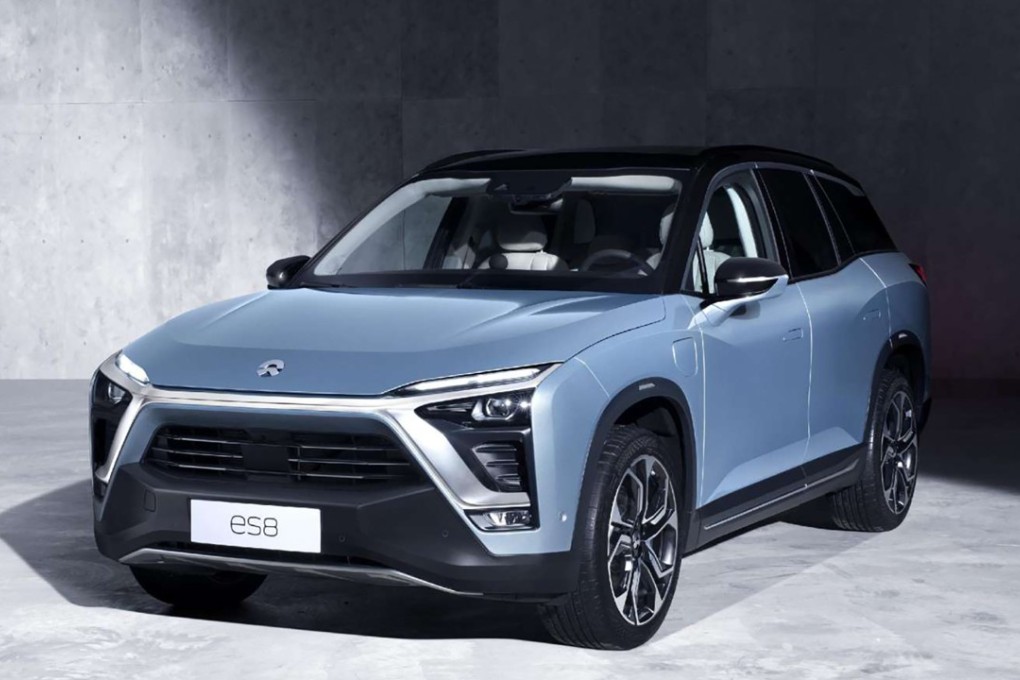This is China’s answer to the Tesla Model X – at about half the price
ES8, SUV launched by electric vehicle start-up NIO, will also feature artificial intelligence system

Chinese electric vehicle start-up NIO has thrown down the gauntlet to US car maker Tesla by launching ES8, a seven-seater high-performance electric SUV, on Saturday, at about half the price of the latter’s Model X.
NIO, which was founded in 2014 and counts Chinese tech giants such as Tencent Holdings, Baidu and Xiaomi among its investors, launched the ES8 – its first production car – in Beijing at a base price of 448,000 yuan (US$67,788) before subsidies. Tesla’s Model X, which is popular on the mainland despite its price, starts at 836,000 yuan after import duties.
“Tesla is a company founded in the era of the internet while NIO was born in the era of mobile internet. The new era, in which smartphones and apps play a much bigger role in people’s daily lives, gives companies like us a great opportunity to revolutionise the automobile industry,” said William Li, founder and chairman of NIO, at the SUV’s launch event in Beijing Wukesong Arena. The company flew in thousands of reservation holders to see the vehicle in person.
Li said a better understanding of Chinese consumers was expected to give domestic carmakers an edge when competing with companies such as Tesla.
The launch of the ES8 comes amid a rising wave of “Tesla challengers”, a clutch of mainland start-ups such as NIO, Byton and Xpeng that are in a race to be the next big electric vehicle major. These companies want to rival Tesla with smart electric vehicles that feature internet connectivity and new technologies, and by leveraging their understanding of Chinese consumers.
The rise of these companies was facilitated by the Chinese government, which gave out electric vehicle manufacturing licences to promote non emission vehicles as part of its strategy to reduce dependence on imported oil and to cut pollution. As a result, the country has emerged as the world’s biggest electric vehicle market, surpassing the United States.